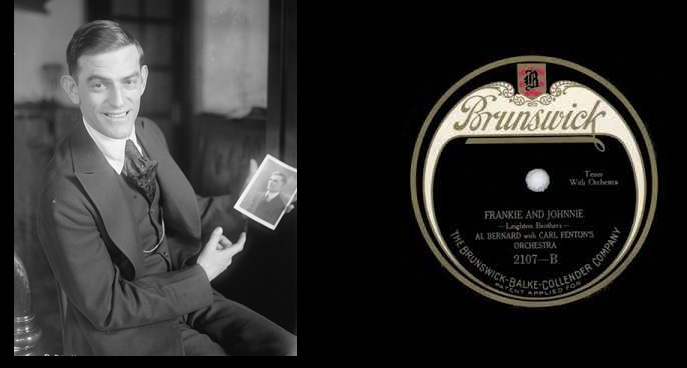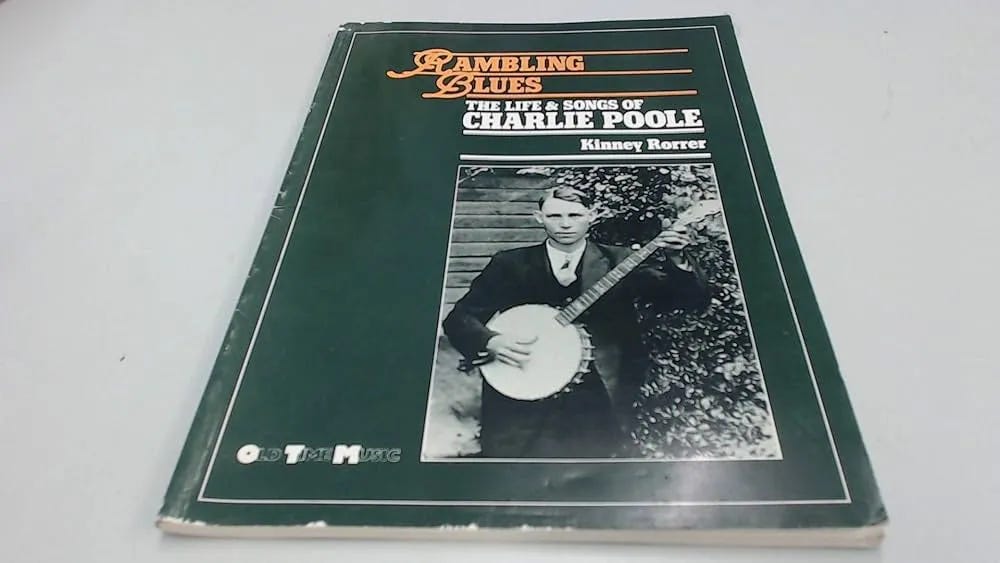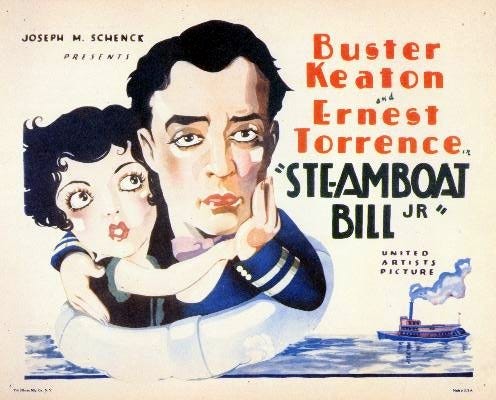Earning their chops in medicine shows and with minstrel troupes in the late 1890s, brothers Frank and Bert Leighton wrote and/or arranged many ragtime pieces for use in vaudeville.
Among their work was a 1912 version of “Frankie and Johnny,” penned with partner Ren Shields, that would set the tone for many future renditions of the song, including a monster hit a decade and half later for Charlie Poole and his North Carolina Ramblers.
The song that Poole and his pals released as “Leaving Home” on Columbia Records in May 1927 already was pretty well known by musicians of the day.
For instance, on the same label in the same year, popular band leader Ted Lewis recorded the same song with the title "Frankie and Johnny: You'll Miss Me in the Days to Come.” Lewis included only the chorus and not the verses.
But it was a half dozen years before that that the first American recording of “Frankie and Johnny” was made by New Orleans-born Al Bernard, one of the first white singers to record blues tunes. (W.C. Handy credited Bernard, in fact, with helping his own career by recording a number of his songs, notably “St. Louis Blues.”)
Whew! That’s a lot of intersecting stories here, but let’s roll it back to Charlie Poole and the Leighton boys.
Kinney Rorer, in his seminal biography Rambling Blues: the Life & Songs of Charlie Poole, notes that the banjoist closely follows the version of “Leaving Home” that the Leighton brothers created, though there are some differences in Charlie’s chorus.
About the Leightons
Now, no one knows just how Poole learned that rendition, but the Leightons were pretty influential. Among the ragtime pieces they wrote was "There's A Dark Man Coming With A Bundle” and "Far Away in Honolulu (They've got the tango craze).”
Their most memorable and influential song was "Steamboat Bill" in 1910, a parody of best-selling “Ballad of Casey Jones,” which had itself been based on a song from the Leightons' vaudeville routine.
Arthur Collins recorded “Steamboat Bill” in 1911, which would inspire Charles Reisner to write a movie for comedian Buster Keaton called “Steamboat Bill Jr.,” which released as a silent film in 1928.
That same year, Walt Disney found inspiration in the movie and in the song to create the first synchronized cartoon with sound, Steamboat Willie.
Back to Johnny and His Murderous Mistress
All the Frankie and Johnny variations were based on an actual murder. Here are the facts of the case:
At 2 in the morning of Oct. 15, 1899, at an apartment building located at 212 Targee Street in St. Louis, 22-year-old Frankie Baker encountered her 17-year-old lover Allen (Albert) Britt as he stumbled back from a cakewalk in the company of a prostitute named Nelly Bly.
Albert and Nellie had just won a prize in a slow-dancing contest, but Frankie didn’t feel like celebrating. On the contrary, she felt like shooting her lover in the stomach, which she did. Albert died in City Hospital four days later.
At trial, Frankie pleaded self-defense at her trial — she claimed Britt had attacked her with a knife prior to the shooting — and she was found not guilty.
Weeks after the murder, St. Louis songwriter Bill Dooley composed “Frankie Killed Allen,” a tune that gained some currency. The first published version appeared in 1904, credited to Hughie Cannon (also remembered for his better-known composition “Won’t You Come Home Bill Bailey”).
That brings up to 1912 and the Frank and Bert Leighton version entitled “Frankie and Johnny” (because, well, “Johnny” apparently flowed better than “Allen” or “Albert”). Since then, there have been more than 250 versions of “Frankie and Johnny” recorded, not to mention several film adaptation over the years.
Our Take on the Tune
When Jack Nuckols switches from drums to fiddle, it often brings back lots of old memories of music parties 50 years ago.
This is another song that Dave Peyton, Joe Dobbs and Charlie Bowen first heard at those parties when the good old Kentucky Foothill Ramblers, led by H. David Holbrook, could play a whole evening full of string band songs from the 1920s and ‘30s.
This track is from last week’s Flood affair, when the group’s old band mate Paul Martin and his mandolin sat in with current Floodsters Charlie and Jack, Danny Cox, Randy Hamilton and Sam St. Clair.
























Share this post